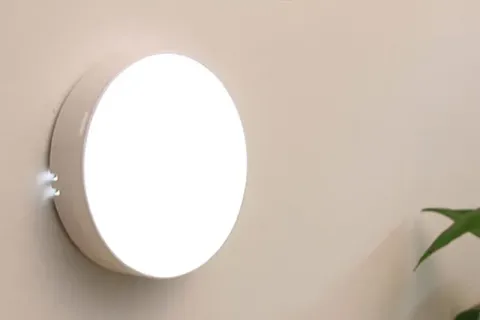1. Multifunctional design to improve ease of use 2. Save space and reduce clutter 3. Energy saving and environmental protection, in line with the modern green life concept 4. Wide range of applicable scenarios to meet different needs 5. Intelligence and sense of technology to enhance living experience
Placing LED night lights with sensors around the bed can significantly improve the convenience and safety of night life. For people who often get up at night or have difficulty in moving, LED night lights with sensors provide touch-free automatic lighting, without the need to fumble for switches, and conveniently return to bed or perform other activities quickly.
Unlike traditional night lights that need to be turned on and off manually, LED motion sensor night lights monitor the surrounding environmental conditions (such as light, movement, sound, etc.) through built-in sensors, and decide when to turn the light on and off based on these changes.
According to the data provided by the manufacturer, the 600mAh rechargeable sensor night light can work continuously for about 16 hours in normal lighting mode. This data means that in normal mode, if you use it as night lighting, it can provide a full night of use time, or even a little more.
Night lights usually need to be turned on for a long time, and the long life characteristics of LED lamps make them very suitable for this purpose. The life of LED night lights can usually reach more than 25,000 hours, compared with the much shorter life of traditional bulbs.
In theory, the night lamp with USB charger is designed to be able to be plugged in continuously without causing damage to the device. However, whether it can be plugged in for a long time depends on many factors, including the design quality of the device, the use environment and daily maintenance.
If the heat dissipation design of LED lamps is poor, the high temperature of LED chips will accelerate their aging. High temperature will cause electron migration inside the chip, which will reduce its luminous efficiency and eventually lead to brightness decay.
When choosing LED lighting fixtures, consumers should focus on lumens rather than watts. Lumens more directly reflect the brightness of the lamp, while watts are mainly used to reflect the energy consumption of the lamp. Understanding the difference between the two can help consumers make more appropriate purchasing decisions.
According to the principles of physics, the greater the current, the more times the electrons and holes in the LED recombine, and the more light energy is generated, so the LED will appear brighter. For standard LED bulbs or LED panel lights, the relationship between brightness and current is usually linear - that is, the current increases, the brightness increases.
If the lamp uses LED lamps with strong ultraviolet emission, or white and blue LED lamps, it may attract more insects, especially at night or in summer. On the contrary, if the lamp uses red light or warm white light, such lamps will be less attractive and the probability of insects gathering is relatively low.
Generally speaking, the length of the vanity wall light is recommended to be no more than 1/3 of the dressing table. Specifically, for a 72-inch dressing table, a wall light with a length between 24 and 36 inches (about 61 to 91 cm) can be selected.
For example, if you need to provide uniform lighting for a 20 square meter area and the target illumination is 300 lumens/square meter, the total lumens required is: Total lumens = target illumination × space area = 300 × 20 = 6000 lumens Then, calculate the required wattage based on the luminous efficacy of the selected LED lamp. For example, assuming that the selected luminous efficacy is 150lm/W, the required wattage is: Required wattage = 6000/150 = 40W












